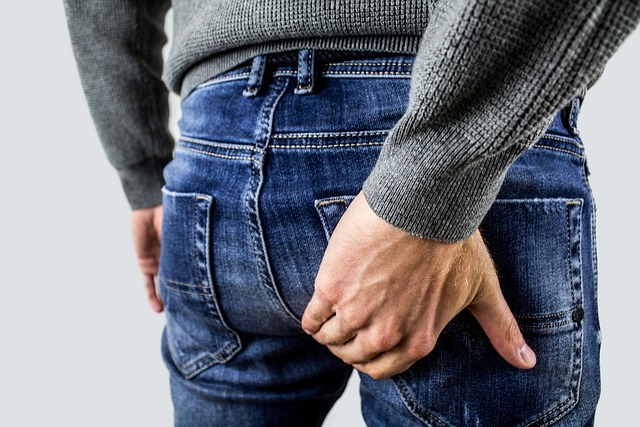Ultrasound Liposuction Information for United States
Ultrasonic liposuction is a surgical procedure in United States for people seeking a body contouring solution. Using advanced ultrasound technology, this minimally invasive method effectively targets fat deposits. While many people experience positive results, results and recovery times may vary depending on individual health factors and body type.

Understanding Ultrasonic Liposuction and Its Benefits
Ultrasonic liposuction, also known as ultrasound-assisted liposuction (UAL), employs high-frequency sound waves to break down fat cells before extraction. The technology works by delivering ultrasonic energy through a specialized cannula, which emulsifies fat cells while preserving surrounding tissues. This approach differs from traditional liposuction that relies solely on mechanical force to dislodge and remove fat.
The benefits of ultrasonic liposuction include potentially improved precision when targeting fibrous areas like the back, male chest, and flanks. The procedure may also result in less trauma to surrounding tissues, potentially reducing bruising and swelling during recovery. Additionally, the ultrasonic technique may provide enhanced skin retraction capabilities compared to traditional methods, which can be particularly beneficial for patients with moderate skin laxity. Ultrasound technology allows surgeons to better differentiate between fat and other tissues, potentially reducing the risk of damage to nerves, blood vessels, and connective tissues.
The Procedure Process and What to Expect
Ultrasound liposuction typically begins with the administration of either local anesthesia with sedation or general anesthesia, depending on the treatment area’s size and patient preferences. Once the anesthesia takes effect, the surgeon makes small incisions (usually less than half an inch) at strategic locations around the treatment area. A tumescent solution containing saline, lidocaine, and epinephrine is then injected to minimize bleeding and provide additional numbing.
Next, the surgeon introduces the ultrasonic probe, activating it to emit sound waves that liquefy the targeted fat cells. This process typically takes several minutes per treatment area. After the fat has been emulsified, a traditional liposuction cannula removes the liquefied fat. The entire procedure may last between one and four hours, depending on the number and size of areas being treated. Patients can typically expect to see final results once swelling has fully subsided, which may take several months, though initial improvements are often visible within weeks.
Recovery Time and Factors Influencing Results
Recovery from ultrasonic liposuction varies by individual, but most patients can return to light activities within 2-3 days and resume normal activities within 2-3 weeks. Compression garments are typically worn for 4-6 weeks to minimize swelling and help the skin conform to the body’s new contours. Patients generally experience moderate discomfort, bruising, and swelling that peaks within the first week and gradually subsides thereafter.
Several factors influence final results, including:
-
Patient age and skin elasticity: Younger patients with good skin elasticity typically achieve better contouring results
-
Treatment area location: Some areas respond better to ultrasonic techniques than others
-
Body mass index (BMI): Ideal candidates are within 30% of their ideal body weight
-
Post-operative compliance: Following surgeon instructions regarding compression garments and activity restrictions improves outcomes
-
Lifestyle habits: Maintaining a stable weight through diet and exercise preserves results long-term
Complete results typically emerge between three and six months post-procedure as residual swelling resolves and tissues fully heal. It’s important to note that ultrasonic liposuction is not a weight-loss solution but rather a body contouring procedure designed to address specific areas resistant to traditional weight management approaches.
Ultrasonic Liposuction Providers and Cost Considerations
Ultrasound liposuction is available across the United States through board-certified plastic surgeons, cosmetic surgeons, and specialized cosmetic surgery centers. The procedure costs vary significantly depending on geographic location, surgeon experience, facility fees, and the number of areas treated.
| Provider Type | Typical Cost Range (Single Area) | Factors Affecting Cost |
|---|---|---|
| Board-Certified Plastic Surgeons | $3,000-$7,500 | Higher credentials, often hospital privileges |
| Cosmetic Surgeons | $2,500-$6,000 | Varying credentials and facility types |
| Specialized Cosmetic Centers | $2,000-$5,000 | May offer package pricing for multiple areas |
Prices, rates, or cost estimates mentioned in this article are based on the latest available information but may change over time. Independent research is advised before making financial decisions.
Most patients can expect to pay between $2,500 and $7,500 per treatment area, with total costs potentially reaching $15,000 or more for multiple areas. Additional expenses may include anesthesia fees ($500-$1,500), facility fees ($800-$1,200), pre-operative medical tests, post-operative medications, and compression garments. Insurance typically does not cover ultrasonic liposuction when performed for cosmetic reasons, though some providers offer financing options to help manage costs.
Safety Considerations and Potential Complications
While ultrasonic liposuction is generally considered safe when performed by qualified professionals, all surgical procedures carry risks. Potential complications specific to ultrasonic techniques include thermal burns from the heat generated by ultrasound energy, seroma formation (fluid accumulation), and temporary or permanent numbness in treated areas. General surgical risks include infection, asymmetry, contour irregularities, and adverse reactions to anesthesia.
Patient selection is crucial for safety and optimal outcomes. Individuals with significant medical conditions, including heart disease, diabetes, or blood clotting disorders, may not be suitable candidates. Those with unrealistic expectations about results or who are seeking weight loss rather than contour improvement should explore alternative options. A thorough consultation with a board-certified surgeon specializing in body contouring procedures helps determine candidacy and develop an appropriate surgical plan.
This article is for informational purposes only and should not be considered medical advice. Please consult a qualified healthcare professional for personalized guidance and treatment.




